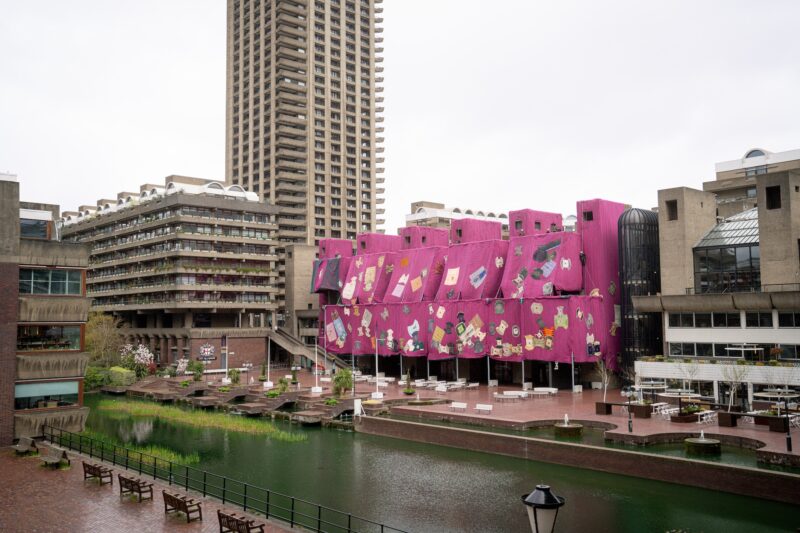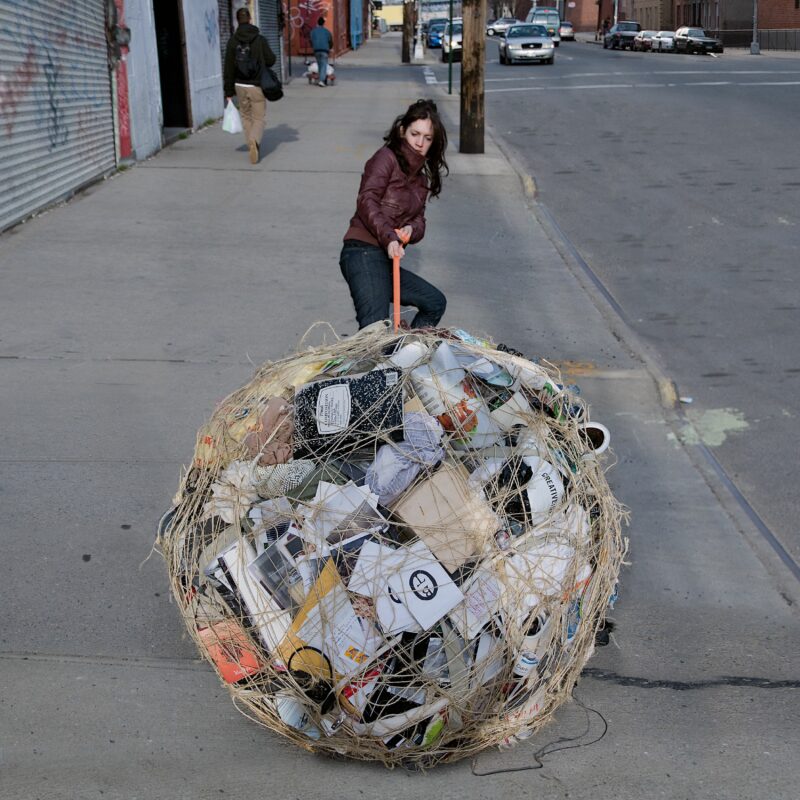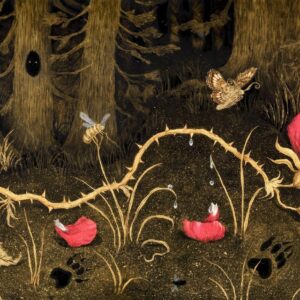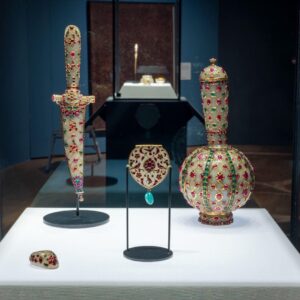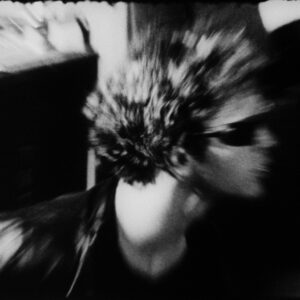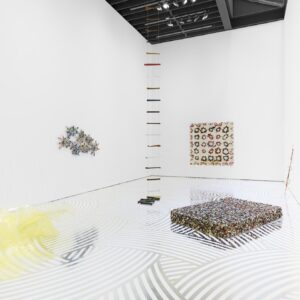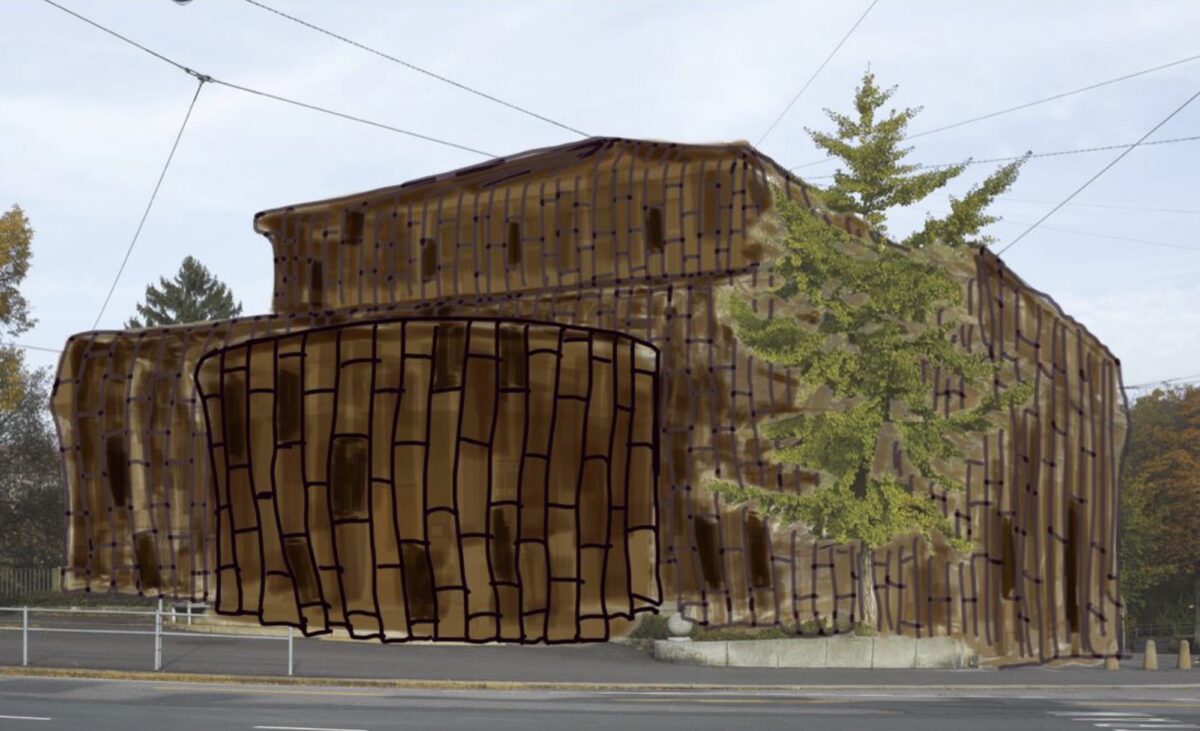
Ibrahim Mahama, born in Ghana in 1987 is to wrap the Kunsthalle Bern in response to Christo & Jeanne-Claude’s wrapping of the Kunsthalle – the first building they ever wrapped – on the occasion of its 50th anniversary in 1968. The proposal interrogates the imprint of the Kunsthalle Bern on national memory, and the impact it has had to the city’s architectural and artistic landscape. It is also a critical comment on the Eurocentric focus of the Kunsthalle highlighting the role of Kunsthalle Bern in shaping the western contemporary art canon.
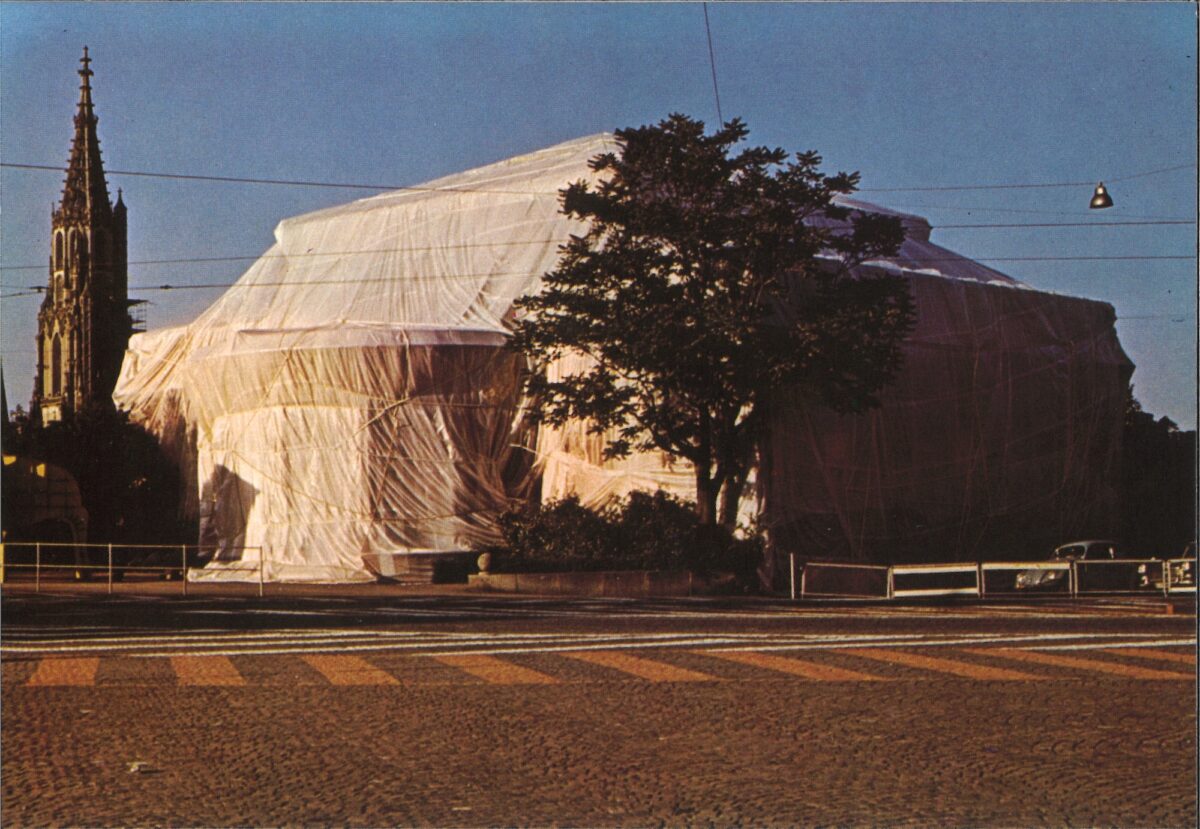
Ibrahim Mahama is known for large-scale installations and interventions, as well as for his use of found objects and repurposed materials. One recurring material in his work is the jute sack, which he collects and assembles collaboratively. Mahama began thinking about jute sacks in 2011 while waiting at the Ghanaian border watching trucks speeding by, transporting food and other produce in these jute sacks, he thought: why is it easier for goods to travel across borders than for humans?
Through this public sculpture for Kunsthalle Bern, Mahama poses questions that discuss the current labor conditions and their ecological manifestations in the global cocoa trade but further addresses the colonial footprint of Swiss mercantile relationships to Ghana through the export of cocoa beans, the prime material for Swiss chocolatiers for hundreds of years. The plant itself was introduced in Ghana in 1857 by the Basel Mission.
Produced in Southeast Asia, the jute sacks that carry cocoa, are imported into Ghana by the Ghanaian cocoa authority (Cocobod) responsible for the transportation of cocoa beans. The cocoa traders cut open the sacks and empty the contents into containers, which then travel on to Europe. The jute sacks are then re-sold to local rice and maize traders who write their names on the sacks. cocoa, significant pest infestation challenges can This is when the material begins to live for Mahama, becoming an extension of the worker’s and trader’s bodies. Eventually, the sacks will be used to transport charcoal: their last life, since they cannot then be used for anything else.

However, jute sacks are also faced with issues like insect infestation, which sometimes means they can only be used once. Especially for severely impact its quality and market value. Post-harvest financial loss can reach 30-40% due to pests such as the almond moth (Cadra cautella), Cocoa weevil (Araecerus fasciculatus), and warehouse beetle (Trogoderma variabile) a.o. These infestations can occur both in the country of production and during transportation or storage abroad. This aspect of the history of jute sacks, also allows us to imagine insects as agents of slowing down over-production, consumerism and carbon footprint, and reflects on the extensive use of pesticides since the beginning of globalization in the late seventies.The ecological disaster that it has caused, has irreperably contaminated soil, water, turf and other vegetation, in other words the host environments of humans and other mammals, as well as birds, fish, beneficial insects, and non-target plants.
Visually and materially, the jute sack represents for Mahama, the history of Ghana’s post- independence era. It also represents a material onto which various aspects of global capitalism unfold. First and foremost, the jute sack becomes a witness of the frantic pace of what many are calling disaster capitalism: the trade of goods, and the movement of materials and their destructive carbon footprint, but also the overall profile of extraction and exploitation or resources in the African continent. Secondly, it becomes a locus of human labour, the fabric being a recognisable prime matter and reference among the international working class. A collector of the sweat of humans, partially torn and marked by their various stations, they tell the history of world trade through colonialism and capitalist economy. Mahama describes them as an archival document characterized by time, form and place. Crucial to the artist’s practice is the collaborative process in which the jute sacks are collected and sorted, sewn together, reshaped and finally installed. In wrapping the Kunsthalle once more, Mahama not only discusses a gesture imprinted in art history, but reclaims it– layering past and present narratives onto our walls, and inviting us to confront the entagled legacies of art, architecture and global trade.
Ibrahim Mahama, 30th April – 1st June, 2025 Kunsthalle Bern
Opening: 30th April, 6PM
About the artist
Ibrahim Mahama was born in 1987 in Tamale, Ghana. He lives and works in Accra, Kumasi and Tamale. Selected solo exhibitions include the Barbican Centre, London (2024); Kunsthalle Osnabrück, Germany (2023); Oude Kerk, Amsterdam (2022); Frac Pays de la Loire (2022); The High Line, New York (2021); University of Michigan Museum of Art (2020); The Whitworth, University of Manchester (2019); Norval Foundation, Cape Town (2019); Tel Aviv Art Museum, Israel (2016); and K.N.U.S.T Museum, Kumasi, Ghana (2013). He has participated in numerous group exhibitions including Lagos Biennial 4th edition, Lagos (2024); Malta Biennale, Malta and Gozo (2024), Sharjah Biennial 15 (2023); 18th International Venice Architecture Biennale (2023); the 35th Bienal de São Paulo (2023); Museum of Fine Arts, Houston (2021); Centre Pompidou, Paris (2020); 22nd Biennale of Sydney (2020); Stellenbosch Triennale (2020); 6th Lubumbashi Biennale, Democratic Republic of the Congo (2019); Ghana Pavilion, 58th Venice Biennale (2019); Documenta 14, Athens and Kassel (2017); Broad Art Museum, Michigan State University (2016); Kunsthal Charlottenborg, Copenhagen and Holbæk (2016); 56th Venice Biennale (2015); and Artist’s Rooms, K21, Düsseldorf (2015). Mahama was also appointed Artistic Director of the 35th Ljubljana Biennale of Graphic Arts, Ljubljana (2023).
